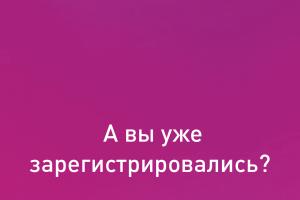,). This book has several editions. I read it in an old edition in electronic form. The book contains a theory on the development of children, including a description of the plot, finger games and much more that evokes an emotional response and engages the centers responsible for speech development.
For our library, I purchased several thin practical books by the same author, Elena Yanushko, from the “New Child” series.
The series is different thick paper and glossy cover. There is also a cardboard version for the little ones. Books for different ages differ in cover color. Marked 1+ - purple, 2+ - orange, 3+ - pink.
Until I understood the mechanism of speech development in children, I underestimated them. They seemed too simple to me, because a child at that age is capable of understanding much more. When Yana became more conscious and began to choose reading for herself, it became clear that she loved simple texts with a lot of repetition. At her request, we read some books 5 times in a row. Sometimes Yana asks for even more, but in such cases I postpone the reading to another time. I think if I had read these particular books 5 times a day from the end of the first year, then the pace of Yana’s speech development would have been faster.
« Little stories about the Kitten." A book with a purple cover for children aged 1 year and older. This book is no longer on sale, but there are similar stories about other animals (Labyrinth, My-shop,). Each page contains a short story with a word substitute. In addition, the book contains tasks of another type - for attentiveness, motor activity and so on. A couple of spreads:


Gorgeous collections of finger and articulation gymnastics
 "Big speech therapy textbook"(Labyrinth, My-shop,). At the beginning of the rapid development of speech (at 2 years 7 months), Yana developed a terrible confusion of sounds. There was a lot of speech, but almost all of it was incomprehensible. Yana replaced all consonants with the letter “T”. According to experts, this phenomenon may be temporary and go away on its own without intervention. But it is also possible that the violation is persistent and the sooner it is corrected, the better. In order not to waste time, I ordered the “Big Speech Therapy Textbook”. I’ve been trying to “catch” it in stock for a long time, and last fall, when a problem with the confusion of letters arose, I was lucky. I'm very glad that I was able to buy it. I think this is one of the best collections of finger games and articulation gymnastics. It also contains exercises for the development of speech hearing and many tongue twisters for practicing different groups of sounds.
"Big speech therapy textbook"(Labyrinth, My-shop,). At the beginning of the rapid development of speech (at 2 years 7 months), Yana developed a terrible confusion of sounds. There was a lot of speech, but almost all of it was incomprehensible. Yana replaced all consonants with the letter “T”. According to experts, this phenomenon may be temporary and go away on its own without intervention. But it is also possible that the violation is persistent and the sooner it is corrected, the better. In order not to waste time, I ordered the “Big Speech Therapy Textbook”. I’ve been trying to “catch” it in stock for a long time, and last fall, when a problem with the confusion of letters arose, I was lucky. I'm very glad that I was able to buy it. I think this is one of the best collections of finger games and articulation gymnastics. It also contains exercises for the development of speech hearing and many tongue twisters for practicing different groups of sounds.
The title of the textbook is quite specific and it may seem that it contains specialized materials for speech therapists. In fact, all materials are simple and accessible. More than half of the tasks are suitable for children over 2.5 years old. The last part of the textbook contains tongue twisters. Some of them contain complex combinations of words with “R”. Articulation gymnastics is accompanied by photographs of the position of the lips and tongue and a fairy tale that captivates the baby.
The textbook is gorgeous, so I can’t resist the pleasure of bringing it more photos spreads so that you can appreciate it at its true worth:
 More spreads from the speech therapy textbook:
More spreads from the speech therapy textbook:






 (
(
Kurochkina T.A., teacher-speech therapist of the first qualification category, Beloyarsky.
Manual: “Travel with signs.”
Target: formation in children preschool age the ability to find similarities between objects, compare objects according to several characteristics; development of imagination; fostering the ability to listen to each other, wait for one’s turn, and follow the rules of the game.
Description: The manual consists of a picture of a steam locomotive, a set of pictures and diagrams of feature names.
Task: the speech therapist asks the child to choose a picture and connect it with a train using a sign wheel. The child names how two objects are similar in this respect. The game continues in the same way as long as there are signs and interest from the children. For example: How are a snail and a leaf similar? The snail has a rough back and a rough leaf. How can a leaf and a boat be similar in terms of humidity? The boat is wet because it is in the water, and the leaf is wet after the rain.
Guide: “Describe the object.”
Goal: developing the ability to describe an object based on existing characteristics.
Description: a map that depicts an object and a set of cards - signs.
Assignment: children choose a card, name an object of the natural or man-made world, lay out the characteristics and describe the object according to the existing characteristics.
Manual: “Trail of signs”.
Goal: developing the ability to describe an object using the names of features in speech; correlate the meaning of the name of this characteristic with a graphic designation; developing in children the ability to focus attention, develop skills of goodwill, and independence.
Description: the manual includes tracks that depict a certain feature and pictures of objects.
Tasks: children choose cards with a characteristic and, when given a signal, select the necessary objects based on their characteristic.
Children choose cards with a sign. The presenter shows a picture and asks: “Who has a fragrant pear?” (blue car, rubber ball, fluffy cat). The child explains his answer, and if it is correct, he receives a picture; if not, then the children correct the mistake and the card is not counted. The first one to assemble the track wins.
Manual “Train of Sounds”
Goal: developing the ability to build a line of objects based on a given sound, and explain your choice.
Description: the manual is made in the form of a train, each trailer has a pocket. A given sound - a letter - is placed in the locomotive; pictures of objects with a given sound are placed in the cars.
Task: we invite the child to select pictures of objects according to a given sound at the beginning of a word (further complication: in the middle, at the end of the word) and distribute them among the cars. At the next station there is another sound - a letter - and the children select other objects. And compose a story in which they will be present pictures - names objects.
Manual “Train of Time”.
Goal: to develop the ability to build a line of events over time, in a logical sequence and encourage them to compose a story.
Description: the manual is made in the form of a train, each trailer has a pocket into which pictures are inserted in a logical sequence.
Assignment: invite the child to choose 3 or more pictures, arrange them in the desired sequence and compose a story.
Manual “Cryptographers”.
Goal: to develop the child’s speech through naming the names of signs and their meanings. Talk about an object using icons - signs. Develop logical thinking, spatial orientation, knowledge of directions clockwise, counterclockwise, left, right.
Description: this manual is designed in the form of a playing field - a rectangle, along the edges of which there are attribute icons. They are covered with cards of different colors - 6 red, 6 yellow and 5 green. Attached to the field are “encrypted” cards, on which 3 circles of red, yellow and green colors are glued with numbers from 1 to 6 and a direction arrow (clockwise or counterclockwise).
Task: the child uses the selected encryption card to find the location of three signs. For example, the first one is red clockwise, the second one is blue counterclockwise, the third one is yellow clockwise. We open the encrypted feature schemes and describe the object using them.
Guide “Tell me about your new neighbor”
Goal: to train children in the ability to select a meaning for a sign, talk about an object using signs, and develop coherent speech.
Description: This manual is designed in the form of cards, divided into six parts. Three signs are depicted across the cell. Pictures are included with the cards.
Assignment: children take a card, put a picture in an empty cell between the icons - signs and talk about the neighbor - the object in the picture based on nearby signs.
Guide “Travelling the World”.
Target: develop coherent speech, expand children’s horizons, consolidate knowledge about the natural and plant world.
Description: a square with 8 pockets and an arrow, pictures of natural corners of the planet, cards and diagrams.
Assignment: the child uses an arrow to select any corner of the planet and tells the story according to the plan in the form of pictures-diagrams.
Benefit “Sunshine”
Target: teach children syllable reading, reinforce speech sounds.
Description: this manual is made in the form of the sun. In the center there is a yellow circle with a pocket in which a blue, green or red letter is placed. Letters of the corresponding color are also located on the rays of the sun.
Task: the child reads a syllable, comes up with a word with the syllable, makes a sentence with this word, and composes a story.
Manual “Smart Tablets”
Goal: to consolidate children’s understanding of sentences, to practice composing sentences from words according to a given pattern.
Description: the manual consists of 18 double-sided cards - A4 format tablets. At the top front side There is a sign icon on the tablet; at the bottom there is a pocket into which an object picture is inserted. On the back of the tablet there are 2 pockets, the top one for the sentence diagram, the bottom one for the preposition diagram.
The manual includes a set of subject pictures, a set of cards with schemes of sentences and prepositions.
Assignment: the child is asked to choose a picture, then the child inserts the picture into the bottom pocket of the first side, the adult gives the task to come up with a sentence according to the diagram, with an object and a sign from the card. IN initial stage, the sentence schema consists of two words, a feature and an object. Then the sentence becomes more complicated and is made up of three words: object, attribute and action.
When the child has mastered composing a sentence of three words, the adult suggests putting a sentence of 4 words, where the fourth word is a preposition.
Tutorial: “Let’s come up with rhyming lines”
Goal: to teach children to compose rhyming lines based on a given phrase.
Description: pictures.
Assignment: the speech therapist invites the children to choose any rhyming pair (nouns for starters) and compose a rhyme as follows: “Once upon a time there was someone and he was like something.”
Manual “Magic words”.
Goal: to develop the ability to form, change, coordinate words.
Description: cards-symbols: “living - inanimate”, “say kindly”, “he, she”, “one-many”, “name whose?”, “say the opposite”, “big, even bigger, the biggest”, “say the same”, “one word, but many meanings”, “related words”, “place of sound in a word”, “sound passport”, “number of syllables.” The entire set is in color and black and white option.
Task: the child is offered a card with which he can complete the corresponding task. The most convenient thing is that all these tasks can be used on any speech material, when working with any group of sounds. You can take a differentiated approach to the task, knowing the characteristics of children. This is a universal manual that can be used in all types of work (individually, with a group of children and frontally). First, children work with a color set, then with black and white.
Guide “Make a proposal”.
Goal: To promote the development of the ability to distinguish the structural components of speech, to develop the ability to construct sentences of varied structure.
Description: proposal diagrams.
Task: this model helps the child more easily, more consciously and quickly understand the complex hierarchical structure of human speech (text, sentence, word, syllable, letter and sound); and learn the order of words in sentences of various types.
Manual “Mnemotracks”
Goal: developing the ability to compose sequential retellings and stories, based on mnemonic tracks.
Description: cards with a real or schematic image of the text that needs to be retold or made up of a story.
Assignment: the child is asked to compose a story, the outline of which is laid out as the story progresses. The speech is accompanied by the display of a mnemonic track
Guide “Ask questions”
Goal: To promote the formation of skills to ask different types of questions to objects or processes, classifying them.
Description: cards with questions, stripes divided into 3 squares, in the fourth there is a question mark.
Task: the child, using a card with a certain type of questions, learns to ask Various types questions and formulate them correctly. Particular attention is paid to the place of the question word in the formulation of the question.
Rings of Lull
Goal: to contribute to the enrichment of children’s vocabulary, the formation of correct grammatical structure of speech, and the development of coherent speech in children.
Description: the manual consists of 2-3 moving circles that have a common axis and are divided into sectors. In each of the sectors you can insert a card with a drawing or a schematic representation of an object.
Task: the child is asked to combine the sectors on the large and small circle and complete the task (for example, “What first, what then?,” “Count the objects,” “Make up a story.”
"System Operator"
Goal: To promote the assimilation of a model for systematizing objects.
Description: table with five or nine screens.
Task: A table with nine screens offered to children helps children understand how to organize objects. Introduces children to the system (object in the present, past and future), supersystem (place of the object in the present past and future) and subsystem (parts of the object in the present, past and future). First, children fill out the table together with the teacher. Then, as you master the skills of schematization, independently.
Manual: “Composing a story according to a diagram.”
Goal: to teach children to compose descriptive stories about objects according to a diagram.
Description: a diagram for composing a story, an object or picture for a description.
Task: the child is asked to describe an object (natural or depicted in a picture) according to a diagram.
Guide “Describe an object or phenomenon”
(toys, animals, birds, clothes, vegetables and fruits, seasons, dishes)
Goal: To promote the assimilation of the model of composing a descriptive story.
Description: schemes for composing descriptive stories.
Assignment: The child is asked to compose a story based on the diagram. This model is a blueprint for a child to write a descriptive story. Helps fill it with content.
1. Photo of a educational manual made by yourself.
2. Description of the algorithm for producing the manual.
You should write:
- materials: a watch box, a toothpaste box, 2 flag sticks, self-adhesive paper of different colors, tape, scissors, a series of plot pictures, 2 pictures with an inscription with the name of the film “Once Upon a Time in Prostokvashino” and “The End”.
- execution sequence: We cover watch and toothpaste boxes with self-adhesive paper. We glue imitation buttons, like on the TV and remote control. We glue together a series of pictures in correct sequence, at the beginning we paste the name of the film “Once Upon a Time in Prostokvashino”, the last file is “the end”. We make slots for flag sticks. We insert the edge of the first sheet with the title of the film inside the box and secure it with tape on the left stick. We roll all the sheets (film) onto the left stick, and secure the edge of the last sheet to the right stick with tape. We close the box. The educational guide for speech development “TV” is ready for use.
3. Problems that this manual helps solve.
The manual can be used to develop children's coherent speech, enrich their vocabulary, develop verbal communication skills, and in the process of learning to compose a story from pictures. When using this manual, speech hearing and expressiveness of speech develops.
4. Option for using the manual.
Fragment of a lesson on speech development for children of senior preschool age “Once upon a time in Prostokvashino”
Target: promote the formation of a coherent oral speech and skills of verbal communication with others based on mastering the literary language of their people.
Tasks:
1. Strengthen the ability to speak coherently, construct sentences correctly, and compose a story based on a series of pictures.
2. Develop speech hearing, expressiveness of speech - intonation, stress; form an idea about different types text.
3. Cultivate responsiveness, compassion, and the desire to help others.
Progress:
The postman Pechkin enters.
Postman Pechkin: Good day! Is this a kindergarten?
Pechkin: They asked me to give you an envelope from Prostokvashino.
Educator: Thank you, dear Pechkin.
Pechkin: Well, I went, otherwise they’re waiting for me in Prostokvashino.
Educator: Guys, some strange letter... there are pictures in the envelope, but something is wrong with them (the pictures are out of order). The envelope also contains a letter for us. (is reading)
“Dear guys, something happened to me, Uncle Fedor, and my dog Sharik. interesting story. I would like to make a film and tell Matroskin about her, who went to visit Fila and Stepashka. But I don't know how to make films. Help me please."
Educator: Shall we help?
Children lay out the pictures in the correct sequence. Glue them together. Inserted into the TV.
Educator: We helped Uncle Fyodor. We've got a real movie, but it needs to be dubbed (children offer their own options for dubbing the film, i.e. they compose stories based on a series of pictures).
Speech development, Manual for preschoolers, Part 1, Buneev R.N., Buneeva E.V., Kislova T.R., 2005.
A guide to speech development for preschoolers is visual material in the form of cards. It is intended for use in classes with preschoolers aged 3-6 years on speech development and preparation for literacy. It is an appendix to the manual “On the Road to the ABC” by authors R.N. Buneeva, E.V. Buneeva, T.R. Kislova. The cards can also be used for classes with preschoolers and in other courses of the comprehensive Program for the development and education of preschoolers “Kindergarten - 2100” (“Hello, world!”, “Knowing myself”), as well as in other educational systems.
Commentary for the teacher.
The manual for the development of coherent speech in preschoolers is prepared in the form of visual material (cards). The cards should be cut out and divided into series, and then used as demonstration material, placed on the board, or as handouts.
The presented series of plot pictures differ in the degree of difficulty of working with them (from 2 to 4 pictures) and in the plot focus: some trace natural patterns (anthology of a man and a woman, seasons, flowering, flower growth, melting of a snowman), others examine problematic situations, positive and negative examples of behavior (a fight for a truck, a girl and an apple, a girl washing herself, “Glutton”, “Fashionista”), thirdly, a story with an interesting plot is illustrated (“Saving a Kitten”), fourthly, they are educational in nature (“Magician ", making jam, sowing a flower). Work with such pictures is built in accordance with their focus.
Types of working with series of two pictures:
- find out what is shown in each of the two pictures;
- invite you to think about what happened before, what happened later, and explain your position;
- for behavioral plots - invite children to express their opinion about the plot and, in case of condemnation, explain what should be done; give examples of similar behavior from personal experience children;
- mix pictures of two or three series and invite children to sort them into plot groups.
Download the e-book for free in a convenient format, watch and read:
Download the book Speech Development, A Guide for Preschoolers, Part 1, Buneev R.N., Buneeva E.V., Kislova T.R., 2005 - fileskachat.com, fast and free download.
- Visual materials for composing sentences and oral stories, Appendix to the manual for preschoolers On the way to the ABC, Buneev R.N., Buneeva E.V., Kislova T.R., 2009
- Forest stories, On the road to ABC, Buneev R.N., Buneeva E.V., Kislova T.R.
- Forest stories on the way to the ABC, Buneev R.N., Buneeva E.V., Kislova T.R., 2012
- Speech development, Manual for preschoolers, Part 2, Buneev R.N., Buneeva E.V., Kislova T.R., 2005
The following textbooks and books.
Didactic manual for kindergarten"Teremok"
Description. I bring to your attention the teaching aid “Teremok”. The manual is intended for preschool children with speech disorders. Used in the educational field “Communication”, “Cognition”, “Reading” fiction" Can be used for individual work, and for working with small subgroups. Promotes speech development and consolidation of acquired speech skills.Method of making the manual.
Using computer graphics we draw a mansion. We print it on a printer.

We laminate the finished image with transparent self-adhesive.
We cut out pockets from transparent film and attach them to the windows using double-sided tape.
We select the necessary pictures and laminate them with tape.

Didactic game "Teremok"
Target: develop children's speech activity.Options for tasks.
1 task “Remember the fairy tale”
Target: develop children’s coherent speech, practice using ordinal numbers.The teacher shows object pictures of fairy tale characters.
- Guess which fairy tale the heroes came from?
- Tell this fairy tale (the child tells the fairy tale independently or with the help of a speech therapist).
- Who was the first to find the tower? Who came second? Third? Who came last and broke the tower? Target: Develop the pitch and timbre of the voice, intonation expressiveness of speech.
The teacher depicts fairy tale characters: mouse, frog, bunny, fox, wolf, bear. The child guesses. Then the child and teacher change roles.
Task 3 “Who lives where?”
Target: Learn to use prepositions over, under, between.The teacher places animals in pocket windows, asks them to look carefully and guess who they are?

- This beast lives above the wolf. This…
- This animal lives above the fox. This …
- This beast lives under my arm. This …
- This animal lives under a frog. This …
- This beast lives between the wolf and the hare. This…
- This one is between the mouse and the bear. This …
Then the child himself makes riddles by pronouncing the words over, under, between
Task 5 “Settle the tenants”
Target: Fix spatial representations to the left, right, top, bottom.The teacher offers to move the animals into apartments.
The mouse will live on the third floor on the left.
Fox is on the second floor on the right.
The bear is on the first floor on the left.
The hare is on the third floor on the right.
The frog is on the second floor on the left.
The wolf is on the first floor on the right.
Task 6 “Select pictures with the given sound”
Target: develop phonemic awareness, learn to isolate a given sound in a word, automate the sound [w] in words.
The teacher puts a letter in the top window indicating the sound [w] (or another sound being assigned) and invites the child to find pictures with this sound.
Task 7 “Divide into syllables”

Target: practice dividing words into syllables.
The teacher places syllable patterns in the windows on the right side and invites the child to place residents on the left side in accordance with the pattern.
- Name each resident. Clap your hands for the number of syllables in each word, and you will find out who lives in which apartment.
Task 8 “Syllable songs”

Target: develop phonemic awareness, automate the sounds in syllables.
In the evening, all the residents of the Teremka organize a concert. Everyone sings their favorite song. Let's sing along with them! Listen carefully and repeat the songs with your mouse. And now together with the fox, and now with the bear. Try not to make mistakes!








